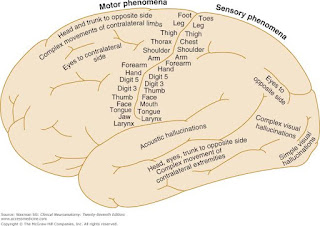Bimonthly assessment - January.
This is my submission for the Bimonthly internal assessment for the month of January.
The questions to the cases being discussed are from the link below:
https://medicinedepartment.blogspot.com/2021/01/medicine-paper-for-january-2021.html?m=1
1)26 year old woman with complaints of altered sensorium somce 1 day,headache since 8 days,fever and vomitings since 4 days.
More case details in the following link.
https://harikachindam7.blogspot.com/2020/12/26-year-old-female-with-complaints-of.html?m=1
a). What is the problem representation of this patient and what is the anatomical localization for her current problem based on the clinical findings?
Problem presentation:
1) Altered sensorium with irrelevant talk since 1 day.
2) Neck pain with headache since one month which worsened for the past 8 to 15 days.
3) Vomitings since one week.
4)Low grade fever since one week.
5)Generalised weakness with decreased appetite since one month.
Anatomical localisation:
1) Kidneys: Hyponatremia secondary to SIADH
2) Brain : TB meningitis, Acute infarct in left thalamus.
B)What is the etiology of the current problem and how would you as a member of the treating team arrive at a diagnosis?
Hyponatremia:
TB meningitis:
CSF analysis shows CBNAAT to be positive and lymphocytosis, decreased glucose and increased protein.
3. Acute infarct in the left thalamic region.
Hypovolemia due to cerebral salt wasting may contribute to stroke in tuberculous meningitis.
TIMELINE OF EVENTS
The patient was already on Hydrochloroquine,Sulfasalazine,Methylprednisolone,Alandronic acid and Cholecalciferol,Aceclofenac,Flupirtine,Gabapentine,Methylcobalamin tablets
C) What is the efficacy of using primary bisphosphonate prophylaxis for patients started on corticosteroids?
What is the efficacy of using primary PPI prophylaxis during initiation of any corticosteroids to prevent Gi ulcers?
d) Please share any reports around similar patients with SLE and TB meningitis?
Here's a case report of a 31 year old woman diagnosed with SLE and subsequently developed SLE myocarditis and Lupus Nephritis who also developed TB meningitis
Another case report of a 51 year old woman with SLE who later developed TB meningitis
e) What is the sensitivity and specificity of ANA in the diagnosis of SLE?
2) Please go through the two thesis presentations below and answer the questions below by also discussing them with the presenters:
a)What was the research question in the above thesis presentation?
Could hypomagnesemia in type 2 DM lead to further more complications
b) What was the researcher's hypothesis?
According to the presenter, hypomagnesemia in type 2 diabetes mellitus could lead to further more complications and poor prognosis.
c)What is the current available evidence for magnesium deficiency leading to poorer outcomes in patients with diabetes?
a)What was the research question in the above thesis presentation?
24 hours urinary sodium in newly diagnosed hypertensive patients.
b)What was the researcher's hypothesis?
The hypothesis is that, the amount of salt consumed is almost equal to the sodium excreted in the urine, which could lead to increase in the blood pressure.
c)What is the current available evidence for the utility of monitoring salt excretion in the hypertensive population?
3) Please critically appraise the full text article linked below:
What is the efficacy of aspirin in stroke in your assessment of the evidence provided in the article. Please go through the RCT CASP checklist here https://casp-uk.net/casp-
The main results of the trial showed that aspirin treatment did not significantly reduce the rate of stroke progression. The progression rate was 15.9% amongst patients treated with aspirin and 16.7% for those on placebo.
The ability to live at home, to walk unaided, or need for further institutionalized care after discharge was not significantly improved in the aspirin group .
The ability to live at home, to walk unaided, or need for further institutionalized care after discharge was not significantly improved in the aspirin group .
RCT CASP checklist:
4) Please mention your individual learning experiences from this month.
Saw a case of hypokalemic periodic paralysis with distal Renal tubular acidosis. Studied about distal RTA and its prognosis.
Learnt about the treatment of such cases.
Saw a case of sepsis with AKI. Learnt about the need for dialysis and
Did my ICU rotational for 3 days.
Learnt about the anatomy of neck and did a central line guided by Dr.Ajith sir.
Saw a case of CKD on MHD with unilateral loculated pleural effusion.
Did pleural tap guided by Dr. Ajith sir once and by Dr.Vinay sir once in a CKD patient with moderate pleural effusion. Drained 700 ml.
Saw a case of unilateral pleural effusion with ruptured liver abscess. Learnt about approach to patients with liver abscess.
Saw a case of severe anaemia with pericardial effusion.
Learnt about approach to patients with anaemia and also learnt about pericardiocentesis, read about various causes of pericardial effusion.
Learnt few points about 2D echo taught by Dr.Rashmitha mam.
5) a) What are the possible reasons for the 36 year old man's hypertension and CAD described in the link below since three years?
Patient was a chronic smoker and alcoholic which could be the risk factors for his HTN AND CAD.
b) Please describe the ECG changes and correlate them with the patient's current diagnosis.
Rythm - Initial ecgs rate is Irregular with VPC ,later becoming regular
Axis - Normal
VPCs followed by a compensatory pause
QS complexes in v1 - v3Poor R wave progression
T-wave inversions in v4 - v6
Mild ST segment elevation in v1 - v4
c) Share an RCT that provides evidence for the efficacy of primary PTCA in acute myocardial infarction over medical management. Describe the efficacy in a PICO format.
P
214 patients with stable angina, normal ventricular function and a proximal stenosis of the left anterior descending coronary artery > 80%
I
Balloon angioplasty
Medical therapy alone
C
Balloon angioplasty (n = 72)
Medical therapy alone (n = 72)
O
At an average follow-up period of 3 years
p = 0.28, angioplasty vs. medical treatment
There was no difference in mortality or infarction rates among the groups










Comments
Post a Comment